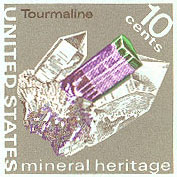
| Lomonosov
History of Geology |

Born: 19 (?) Nov. 1711, Denisovka, now Lomonosov.
Died: 4 April 1765, buried at St. Petersburg.
| Abstract | Introduction |
| Major works | Russian education |
| Historical assessment | Related websites |

| Lomonosov
History of Geology |

Born: 19 (?) Nov. 1711, Denisovka, now Lomonosov.
Died: 4 April 1765, buried at St. Petersburg.
| Abstract | Introduction |
| Major works | Russian education |
| Historical assessment | Related websites |
His two most important geological publications are A word on the formation of metals from earth tremors (1757) and On the Earth's strata, published in 1763 as a supplement to a treatise on metallurgy. He developed the principle that nature undergoes regular, continuous evolution, the actualistic method, which has much in common with Hutton's later concept of uniformitarianism. He demonstrated the organic origin of soil, peat, coal, petroleum and amber, and made significant contributions in mineralogy.
Lomonosov was well regarded by contemporary European scientists; he was elected honorary member of the Swedish (1760) and Bologna (1764) academies of science. He worked persistantly to upgrade the quality of Russian scientific education, and his efforts resulted in the founding in 1755 of what is now Moscow State University. Lomonosov occupies a central place in the history of Russian science, and he is memorialized in many place names and honorary scientific medals.
In the winter of 1730-31, he walked with a trading caravan from Arkhangelsk 800 miles to Moscow. There he posed as the son
of a nobleman to gain admission to the Slavo-Graeco-Latin Academy in Moscow. He proved to be an
outstanding student, and his humble origin was overlooked when later discovered. He was sent to the Academic University in St. Petersburg in 1735 for advanced training. Then he was sent in 1736 to Germany, where he studied mineralogy and chemistry, first at Marburg University and later at the Freiburg Academy. He had a secret marriage in Germany and, following some ill-conceived adventures including a few days in the Prussian Army, he returned to Russia in 1741. In 1742, he was appointed to a physics position at the St.
Petersburg Academy of Science. The St. Petersburg Academy of Science was highly respected
in Europe; it was staffed at this time mainly by foreign scientists, for example
Lehmann. Lomonosov became the first native-born Russian professor of chemistry at the academy in 1745.
Lomonosov's scientific activity falls in three periods of his life.
Portrait of Lomonosov. Provided
Lomonosov had a particular interest in mineralogy going back to his German education.
He noticed natural groupings or occurrences of certain ore minerals and noted that certain
minerals typically indicate the presence of other minerals. This phenomenon is now called
paragenesis—the common genesis of related minerals. His paper on Discourses on
the hardness and liquidity of bodies describes geometric arrangements for packing
spheres (atoms) in the crystal lattice. He noted the constancy of crystal interfacial
angles. Lomonosov also applied chemical analysis to determine the genesis of various rocks
and proved the organic origin of soil, peat, coal, petroleum and amber.
Return to history of geology syllabus or schedule.Introduction
Lomonosov was the first Russian scientist of world importance. He had encyclopedic
knowledge, interests and abilities. He was a poet, artist and historian. His father
was a successful merchant fisherman of the peasant class in the White Sea region of northwestern Russia. Lomonosov travelled extensively along the northern Russian coast, into Lapland, and as far as Svalbard with his father's trading ventures. Lomonosov desired an education, however, and he learned to read and write poetry and studied mathematics.

from the FUNET Russian Archive.
Major Works
His major scientific work was in physical chemistry. He supported the "atomic-molecular"
theory of matter and "molecular-kinetic" theory of heat. The latter was a forerunner of
thermodynamics that developed in the following century. Lomonosov was a leader in
development of quantitative chemistry and physics. He had interests in optics and
astronomy. During a transit of Venus across the Sun on 26 May 1761, he discovered that
Venus possesses an atmosphere. His two most important geological publications were both
written in Latin.
Lomonosov supported the fundamental principle of the regular, continuous evolution of
nature. He believed the natural environment is not static or unchanging, which was the
popular belief of the time. He considered that ancient geology should be interpreted by
comparison to modern geological processes, an approach he called the actualistic
method. This approach had much in common with Hutton's later concept of
uniformitarianism. Lomonosov was the first to explicitly separate geological
processes into external (exogenic—wind, rain, rivers, glaciers, etc.) and internal
(endogenic—tectonic movement, volcanoes, etc.). Most believed at the time that the
Earth's crust was stationary. Lomonosov distinguished both slow warping of the crust
(epeirogeny) and mountain building (orogeny).Russian Education
Lomonosov strove to upgrade
the quality of Russian science and education. He attempted, but failed, to found a university
in St. Petersburg. He eventually succeeded in founding what is now Moscow State University in
1755. This university, officially named after Lomonosov, is at the apex of the Russian
system of higher education. In 1765, Lomonosov caught a cold and died at age 54. He is buried in the cemetery of
Alexander Nevsky Monastary in St. Petersburg, Russia.Historical Assessment
Lomonosov was well regarded by contemporary European scientists. He was made an honorary
member of the Swedish Academy of Science in 1760 and became an honorary member of the
Bologna Academy of Science in 1764. He occupies a central place in the history of Russian
science. Lomonosov is memorialized in many place names—Arctic submarine ridge, Atlantic
current, etc. The Russian Academy of Sciences awards Lomonosov honorary medals in scientific
achievement—one to a Russian and one to a foreign scientist. Yet, he is not even mentioned
in our textbook (Faul and Faul 1983)—an oversight.
© J.S. Aber (2017).